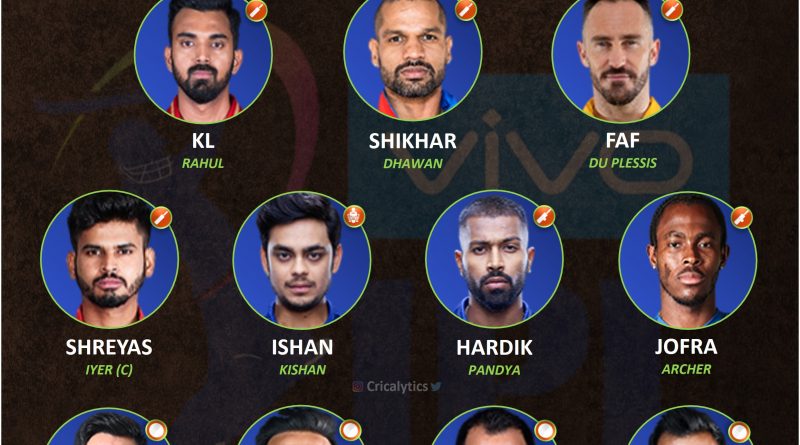Cricket B: Cricket is one of the most popular sports in the world, with a rich history and a large following. While the sport is most commonly associated with countries like England, Australia, and India, it is played in many other parts of the world as well. Cricket B, also known as T20 cricket, is a shorter and more fast-paced version of the traditional game, which has gained significant popularity in recent years. In this article, we will provide a comprehensive guide to the game, its rules, and how it is played.
Introduction
Cricket B, also known as T20 cricket, is a shortened form of the traditional game, which is played over a period of five days. T20 cricket matches are completed in about three hours, making it a more fast-paced and exciting version of the game. The game has gained significant popularity in recent years, particularly in countries like India, Australia, and England. In this article, we will provide a comprehensive guide to the game, its rules, and how it is played.
Brief History of Cricket
Cricket is believed to have originated in England in the 16th century, and it quickly became a popular sport among the nobility. Over time, the sport spread to other parts of the world, including Australia, India, and the West Indies. Today, cricket is played in many countries around the world, with the International Cricket Council (ICC) serving as the governing body for the sport. Cricbuzz: Your Ultimate Destination for Cricket News and Analysis
The Basics of Cricket B
Objective of the Game
The objective of the game is simple: each team tries to score as many runs as possible while the other team tries to restrict their scoring. The team with the most runs at the end of the match wins.
Teams and Players
A T20 cricket team consists of eleven players, with each team allowed to field up to four substitutes. Each team is led by a captain, who is responsible for making strategic decisions during the game.
The Pitch and Field
The pitch is a rectangular strip of land, which measures 22 yards in length and 10 feet in width. The field is a circular area, which surrounds the pitch. The fielding team can position its players anywhere on the field, but they must have at least four players inside the circle at all times.
Equipment
The equipment used in T20 cricket includes a cricket bat, a cricket ball, and protective gear for the players. The cricket bat is made of wood and is used by the batting team to hit the ball. The cricket ball is made of leather and is designed to bounce and spin off the pitch. Players wear helmets, pads, gloves, and other protective gear to prevent injuries. Cricbuzz: Your Ultimate Destination for Cricket News and Analysis
Rules of Cricket B
Toss and Decision Making
Before the start of the match, the two team captains participate in a coin toss. The team that wins the toss can choose to bat first or field first.
Batting
In T20 cricket, each team gets to bat for a total of 20 overs, with each over consisting of six deliveries. The batting team’s objective is to score as many runs as possible while losing the least number of wickets. Each over is bowled by a member of the fielding team, with the aim of taking wickets and restricting the scoring.
The batsmen take turns facing the bowlers, with each team member allowed to bat only once in the innings. The batting team can score runs by hitting the ball and running between the wickets, with each completed run adding one to the team’s score. They can also score runs by hitting the ball to the boundary of the field, which adds four runs to the score, or by hitting the ball over the boundary, which adds six runs to the score.
If a batsman is dismissed by the fielding team, they are replaced by the next player in the batting order. The fielding team can dismiss the batsman in several ways, including by catching the ball, hitting the wicket with the ball, or forcing the batsman to make an error in judgment.
Bowling
In T20 cricket, the bowlers deliver the ball to the batsmen in an attempt to take wickets and restrict the scoring. Each bowler is allowed to bowl a maximum of four overs per innings. The bowler must deliver the ball from behind a marked line on the pitch, called the bowling crease.
The bowler can dismiss the batsman in several ways, including by knocking over the wickets, catching the ball hit by the batsman, or running out the batsman before they can reach the other end of the pitch.
Fielding
The fielding team is responsible for trying to prevent the batting team from scoring runs and taking wickets. The fielders can position themselves anywhere on the field, with the aim of catching the ball or stopping it from reaching the boundary. They can also try to run out the batsmen by hitting the wicket with the ball or by catching the batsmen off guard.
Scoring in Cricket B
Runs
The batting team’s objective is to score as many runs as possible, with each completed run adding one to the team’s score. The batsmen can also score runs by hitting the ball to the boundary of the field, which adds four runs to the score, or by hitting the ball over the boundary, which adds six runs to the score.
Extras
Extras are additional runs awarded to the batting team, which are not scored by the batsmen. Extras can be awarded for several reasons, including when the bowler bowls a no-ball or a wide ball, when the fielding team commits a fielding infringement, or when a batsman is obstructed by a fielder.
Wickets
The batting team can lose wickets in several ways, including by being caught out, being run out, or being bowled out. When a batsman is dismissed, they are replaced by the next player in the batting order. Cricbuzz: Your Ultimate Destination for Cricket News and Analysis
Strategies in Cricket B
Batting Strategies
In T20 cricket, the batting team needs to score runs quickly while minimizing the number of wickets they lose. The batsmen need to be aggressive and look for scoring opportunities while being mindful of the field placements and the bowlers’ strengths.
Bowling Strategies
The fielding team needs to take wickets and restrict the scoring of the batting team. The bowlers need to bowl accurately and vary their pace and length to deceive the batsmen. The fielders need to be positioned strategically and be alert for catching opportunities.
Tata IPL 2023: Who Will Win Today Match MI vs RCB?
Conclusion
Cricket B, or T20 cricket, is a fast paced and exciting format of cricket that has gained popularity all over the world. It involves a unique combination of batting, bowling, and fielding strategies, making it a challenging and thrilling sport to watch and play.
In T20 cricket, each team gets to bat for a total of 20 overs, with the objective of scoring as many runs as possible while losing the least number of wickets. The bowlers, on the other hand, aim to take wickets and restrict the scoring of the batting team. The fielding team tries to prevent the batting team from scoring runs and taking wickets through strategic positioning and catching opportunities.
To succeed in T20 cricket, both the batting and fielding teams need to have well-thought-out strategies and be able to adapt to changing situations quickly. The batsmen need to be aggressive while being mindful of the field placements and the bowlers’ strengths. The bowlers need to bowl accurately and vary their pace and length to deceive the batsmen. The fielders need to be positioned strategically and be alert for catching opportunities.
In conclusion, Cricket B is a thrilling and exciting format of cricket that has captivated audiences worldwide. It requires a combination of skill, strategy, and adaptability from both the batting and fielding teams to succeed. Whether you are a seasoned cricket fan or a newcomer to the sport, Cricket B is definitely worth watching and playing.
- Urfi Javed came out for Manipur Women with board in hand wrote Kuki and Manipur!
- Punjabi singer Ranjit Sidhu committed suicide due to relatives, dead body found near railway track, know what was the matter. punjabi singer ranjit sidhu death due to relatives dead body found near railway track know matter
- TamilYogi 2023 – Tamil Movies Free Download [TamilYogi.com]
- Best Saree Shop in Hazratganj: Aamantran – Your Destination for Exquisite Sarees
- Manomay Dental Care: #1 Best Dental Care in Lucknow
FAQs
T20 cricket is a shorter format of the game, with each team getting to bat for a total of 20 overs, making it faster and more exciting.
The team that scores the most runs at the end of their innings wins the match.
Each team consists of 11 players.
No, each bowler is allowed to bowl a maximum of four overs per innings.
Extras are additional runs awarded to the batting team for reasons such as no-balls, wide balls, and fielding infringements by the fielding team.



